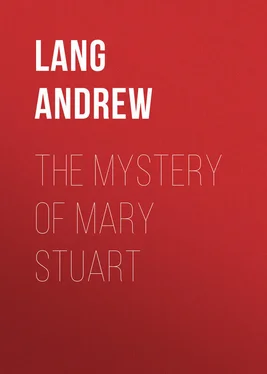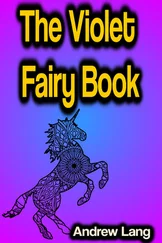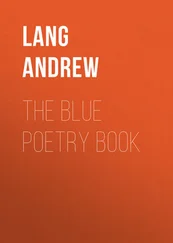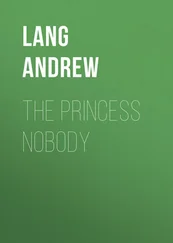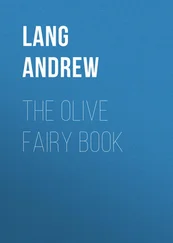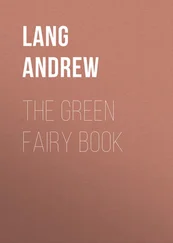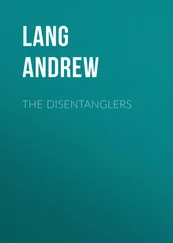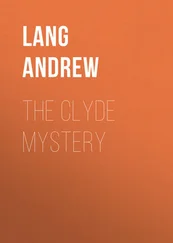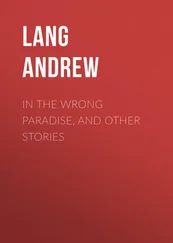Andrew Lang - The Mystery of Mary Stuart
Здесь есть возможность читать онлайн «Andrew Lang - The Mystery of Mary Stuart» — ознакомительный отрывок электронной книги совершенно бесплатно, а после прочтения отрывка купить полную версию. В некоторых случаях можно слушать аудио, скачать через торрент в формате fb2 и присутствует краткое содержание. Жанр: foreign_antique, foreign_prose, на английском языке. Описание произведения, (предисловие) а так же отзывы посетителей доступны на портале библиотеки ЛибКат.
- Название:The Mystery of Mary Stuart
- Автор:
- Жанр:
- Год:неизвестен
- ISBN:нет данных
- Рейтинг книги:4 / 5. Голосов: 1
-
Избранное:Добавить в избранное
- Отзывы:
-
Ваша оценка:
- 80
- 1
- 2
- 3
- 4
- 5
The Mystery of Mary Stuart: краткое содержание, описание и аннотация
Предлагаем к чтению аннотацию, описание, краткое содержание или предисловие (зависит от того, что написал сам автор книги «The Mystery of Mary Stuart»). Если вы не нашли необходимую информацию о книге — напишите в комментариях, мы постараемся отыскать её.
The Mystery of Mary Stuart — читать онлайн ознакомительный отрывок
Ниже представлен текст книги, разбитый по страницам. Система сохранения места последней прочитанной страницы, позволяет с удобством читать онлайн бесплатно книгу «The Mystery of Mary Stuart», без необходимости каждый раз заново искать на чём Вы остановились. Поставьте закладку, и сможете в любой момент перейти на страницу, на которой закончили чтение.
Интервал:
Закладка:
Andrew Lang
The Mystery of Mary Stuart
PREFACE
In revising this book I have corrected a number of misreadings in the Arabic numerals of dates of years. I owe much to Mr. David Bruce-Gardyne and Mr. Hay Fleming. In deference to other criticisms offered privately, I have somewhat modified certain phrases about the hypothetical forged letter, as quoted by Moray and Lennox (pp. 211-236). That such a letter once existed is, of course, an inference on which readers must form their own opinion. The passage as to the site of Darnley’s house, Kirk o’ Field (pp. 124-131), ought to have been banished to an Appendix. On any theory the existence of the town wall, shown in the contemporary chart opposite p. 130, is a difficulty. The puzzle is caused by the chart of 1567, reduced in the design given at p. 130. In all published forms the drawing is given as it is here. But it reverses the points of the compass, east and west. Mr. A. H. Millar has suggested to me that if reflected in a mirror some errors of the chart disappear, whence one infers that it was drawn in reverse for an engraving. I have, therefore, corrected the text in this sense. But difficulties remain: there is a town wall, running south to north, of which we have no other knowledge; and Hamilton House (if the chart is reversed) is placed east instead of west of Kirk o’ Field, where it actually stood. The original design contains only the name of Hamilton House. In our chart the house is copied from the picture of it as part of the University buildings, in the map of 1647.
INTRODUCTION
Mr. Carlyle not unjustly described the tragedy of Mary Stuart as but a personal incident in the true national History of Scotland. He asked for other and more essential things than these revelations of high life. Yet he himself wrote in great detail the story of the Diamond Necklace of Marie Antoinette. The diamonds of the French, the silver Casket of the Scottish Queen, with all that turned on them, are of real historical interest, for these trifles brought to the surface the characters and principles of men living in an age of religious revolution. Wells were sunk, as it were, deep into human personality, and the inner characteristics of the age leaped upwards into the light.
For this reason the Mystery of Mary Stuart must always fascinate: moreover, curiosity has never ceased to be aroused by this problem of Mary’s guilt or innocence. Hume said, a hundred and fifty years ago, that the Scottish Jacobite who believed in the Queen’s innocence was beyond the reach of reason or argument. Yet from America, Russia, France, and Germany we receive works in which the guilt of Mary is denied, and the arguments of Hume, Robertson, Laing, Mignet, and Froude are contested. Every inch of the ground has been inspected as if by detectives on the scene of a recent murder; and one might suppose that the Higher Criticism had uttered its last baseless conjecture and that every syllable of the fatal Casket Letters, the only external and documentary testimony to Mary’s guilt, must have been weighed, tested, and analysed. But this, as we shall see, is hardly the fact. There are ‘points as yet unseized by Germans.’ Mary was never tried by a Court of Justice during her lifetime. Her cause has been in process of trial ever since. Each newly discovered manuscript, like the fragmentary biography by her secretary, Nau, and the Declaration of the Earl of Morton, and the newly translated dispatches of the Spanish ambassadors, edited by Major Martin Hume (1894), has brought fresh light, and has modified the tactics of the attack and defence.
As Herr Cardauns remarks, at the close of his ‘Der Sturz der Maria Stuart,’ we cannot expect finality, and our verdicts or hypotheses may be changed by the emergence of some hitherto unknown piece of evidence. Already we have seen too many ingenious theories overthrown. From the defence of Mary by Goodall (1754) to the triumphant certainties of Chalmers (1818), to the arguments of MM. Philippson and Sepp, of Mr. Hosack, and of Sir John Skelton (1880-1895), increasing knowledge of facts, new emergence of old MSS. have, on the whole, weakened the position of the defence. Mr. Henderson’s book ‘The Casket Letters and Mary Stuart’ (First Edition 1889) is the last word on the matter in this country. Mr. Henderson was the first to publish in full Morton’s sworn Declaration as to the discovery, inspection, and safe keeping of the fatal Casket and its contents. Sir John Skelton’s reply [1] Blackwood’s Magazine , December, 1889.
told chiefly against minor points of criticism and palæography.
The present volume is not a Defence of Mary’s innocence. My object is to show, how the whole problem is affected by the discovery of the Lennox Papers, which admit us behind the scenes, and enable us to see how Mary’s prosecutors, especially the Earl of Lennox, the father of her murdered husband, got up their case. The result of criticism of these papers is certainly to reinforce Mr. Hosack’s argument, that there once existed a forged version of the long and monstrous letter to Bothwell from Glasgow, generally known as ‘Letter II.’ In this book, as originally written, I had myself concluded that Letter II., as it stands, bears evidence of garbling. The same is the opinion of Dr. Bresslau, who accepts the other Casket Papers as genuine. The internal chronology of Letter II. is certainly quite impossible, and in this I detected unskilled dove-tailing of genuine and forged elements. But I thought it advisable to rewrite the first half of the Letter, in modern English, as if it were my own composition, and while doing this I discovered the simple and ordinary kind of accident which may explain the dislocation of the chronology, and remove the evidence to unskilled dove-tailing and garbling. In the same spirit of rather reluctant conscientiousness, I worked out the scheme of dates which makes the Letter capable of being fitted into the actual series of events. Thus I am led, though with diffidence, to infer that, though a forged version of Letter II. probably once existed, the Letter may be, at least in part, a genuine composition by the Queen. The fact, however, does not absolutely compel belief, and, unless new manuscripts are discovered, may always be doubted by admirers of Mary.
Sir John Skelton, in his ‘Maitland of Lethington,’ regarded the supposed falsification of Letter II. as an argument against all the Casket Letters (‘false in one thing, false in all’). But it is clear that forgery may be employed to strengthen the evidence, even of a valid cause. If Mary’s enemies deemed that the genuine evidence which they had collected was inadequate, and therefore added evidence which was not genuine, that proves their iniquity, but does not prove Mary’s innocence. Portions of the Letter II., and of some of the other Letters, have all the air of authenticity, and suffice to compromise the Queen.
This inquiry, then, if successfully conducted, does not clear Mary, but solves some of the darkest problems connected with her case. I think that a not inadequate theory of the tortuous and unintelligible policy of Maitland of Lethington, and of his real relations with Mary, is here presented. I also hope that new light is thrown on Mary’s own line of defence, and on the actual forgers or contaminators of her Letters, if the existence of such forgery or contamination is held to be possible.
By study of dates it is made clear, I think, that the Lords opposing Mary took action, as regards the Letters, on the very day of their discovery. This destroys the argument which had been based on the tardy appearance of the papers in the dispatches of the period, an argument already shaken by the revelations of the Spanish Calendar.
Mary’s cause has, hitherto, been best served by her accusers, most injured by her defenders. For political and personal reasons her enemies, her accomplices, or the conscious allies of her accomplices, perpetually stultified themselves and gave themselves the lie. Their case was otherwise very badly managed. Their dates were so carelessly compiled as to make their case chronologically impossible. Their position, as stated, probably by George Buchanan and Makgill, in ‘The Book of Articles,’ and the ‘Detection,’ is marred by exaggerations and inconsistencies. Buchanan was by no means a critical historian, and he was here writing as an advocate, mainly from briefs furnished by Lennox, his feudal chief, the father of the murdered Darnley. These briefs we now possess, and the generosity of Father Pollen, S.J., has allowed me to use these hitherto virgin materials.
Читать дальшеИнтервал:
Закладка:
Похожие книги на «The Mystery of Mary Stuart»
Представляем Вашему вниманию похожие книги на «The Mystery of Mary Stuart» списком для выбора. Мы отобрали схожую по названию и смыслу литературу в надежде предоставить читателям больше вариантов отыскать новые, интересные, ещё непрочитанные произведения.
Обсуждение, отзывы о книге «The Mystery of Mary Stuart» и просто собственные мнения читателей. Оставьте ваши комментарии, напишите, что Вы думаете о произведении, его смысле или главных героях. Укажите что конкретно понравилось, а что нет, и почему Вы так считаете.
